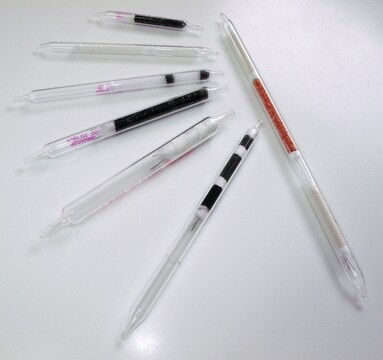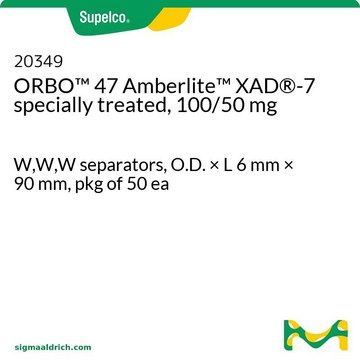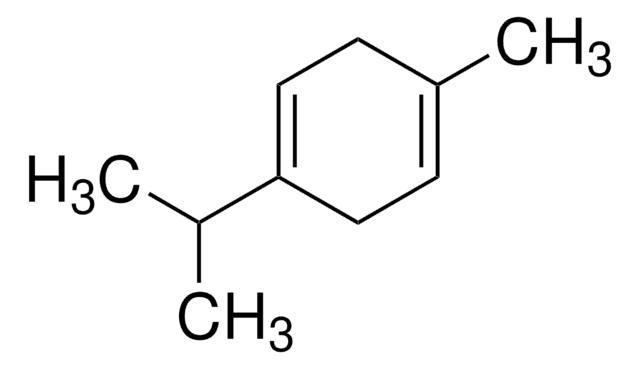20358
ORBO™ 90 Carboxen® 564 (20/45), 160/80 mg
W,F,F separators, O.D. × L 6 mm × 75 mm, pkg of 25 ea, for analyte group MEK (methylethyl ketone)
Synonim(y):
ORBO™ Carboxen-564 Tube
About This Item
Polecane produkty
Materiały
W,F,F separators
Poziom jakości
agency
NIOSH 2500
linia produktu
ORBO™
skład
Bed A, 160 mg
Bed B, 80 mg
opakowanie
pkg of 25 ea
producent / nazwa handlowa
ORBO™ 90
metody
active air sampling: suitable
śr. zewn. × dł.
6 mm × 75 mm
Matryca
Carboxen® 564 Carbon Molecular Sieve (CMS)
wielkość cząstki
20-45 mesh
Zastosowanie
air monitoring
environmental
industrial hygiene
kompatybilność
for analyte group MEK (methylethyl ketone)
Szukasz podobnych produktów? Odwiedź Przewodnik dotyczący porównywania produktów
Powiązane kategorie
Opis ogólny
- ORBO™ 90 Carboxen® 564 (20/45), 160/80 mg solvent desorption tube is designed for gas and vapor sampling.
- It contains two beds of the same selective adsorbent separated by glass wool or foam.
- Dual-layer or two-bed construction of the tube allows for any sample breakthrough to be captured in the smaller back-up bed.
Informacje prawne
Kod klasy składowania
11 - Combustible Solids
Klasa zagrożenia wodnego (WGK)
nwg
Temperatura zapłonu (°F)
Not applicable
Temperatura zapłonu (°C)
Not applicable
Wybierz jedną z najnowszych wersji:
Certyfikaty analizy (CoA)
It looks like we've run into a problem, but you can still download Certificates of Analysis from our Dokumenty section.
Proszę o kontakt, jeśli potrzebna jest pomoc Obsługa Klienta
Masz już ten produkt?
Dokumenty związane z niedawno zakupionymi produktami zostały zamieszczone w Bibliotece dokumentów.
Klienci oglądali również te produkty
Nasz zespół naukowców ma doświadczenie we wszystkich obszarach badań, w tym w naukach przyrodniczych, materiałoznawstwie, syntezie chemicznej, chromatografii, analityce i wielu innych dziedzinach.
Skontaktuj się z zespołem ds. pomocy technicznej









